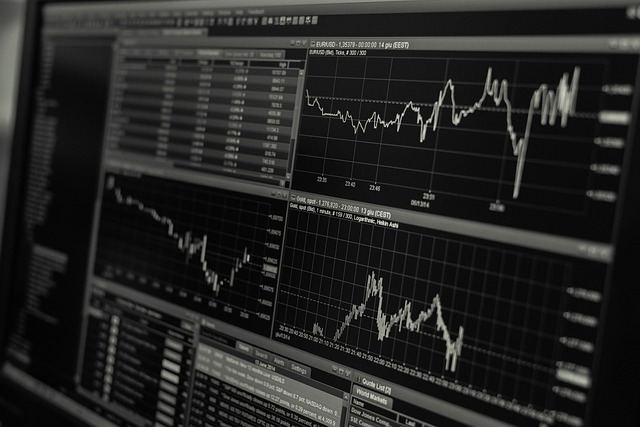
Financial markets often move in reaction to events that are announced long before they happen. A single report about inflation, jobs, or interest rates can send prices soaring or tumbling. For traders and investors trying to stay ahead, relying on instinct alone is never enough. That’s where an economic calendar becomes an essential ally, helping users anticipate market shifts with precision and confidence.
Understanding the Power of an Economic Calendar
An economic calendar is a digital tool that lists upcoming economic events, data releases, and financial announcements that may influence global markets. These include reports such as GDP growth, consumer confidence, employment data, central bank meetings, and inflation figures. Each event is marked with a specific time, expected value, previous value, and the actual result when released.
This calendar acts as a roadmap for traders, giving them the foresight to plan entries, exits, or hedges based on potential volatility. Rather than being surprised by a sudden market swing, they can prepare in advance for high-impact events.
Why It Matters to Every Trader and Investor
The financial market doesn’t move randomly. Behind each rally or pullback is a reaction to information, often data revealed through scheduled announcements. For example, when a country’s inflation rate exceeds forecasts, it can lead to expectations of tighter monetary policy, which strengthens its currency. Conversely, weaker-than-expected employment data might signal an economic slowdown, causing investors to shift toward safer assets.
An economic calendar helps traders keep track of these releases so they can align strategies accordingly. Day traders use it to manage risk around high-volatility periods. Long-term investors monitor it to understand broader economic trends. Even casual investors benefit from knowing when key reports might affect their portfolio’s value.
Key Features of a Modern Economic Calendar
Today’s advanced financial platforms offer interactive calendars that do much more than list dates. A high-quality economic calendar typically includes the following:
1. Event Importance Levels – Events are categorized as low, medium, or high impact. This helps users prioritize attention toward announcements that can cause significant price movements.
2. Global Coverage – Economic calendars track data from multiple countries, allowing traders in any region to monitor both domestic and international developments.
3. Forecast and Actual Data – Seeing the difference between market expectations and the final result helps traders assess sentiment and volatility.
4. Filters and Customization – Users can filter events by country, category, or level of importance to focus on what truly matters to their trading strategy.
5. Real-Time Updates – Since data releases are time-sensitive, real-time updates ensure accuracy and relevance.
6. Historical Insights – Many platforms include past data so traders can observe how similar reports affected markets previously.
By combining these features, traders can transform raw information into actionable insights.
How an Economic Calendar Shapes Market Strategy
Timing is everything in trading. Knowing when an event will occur allows for smarter decisions. For instance, if a trader anticipates a major announcement such as a central bank’s interest rate decision, they can avoid opening new positions right before the release. Instead, they can wait to see how the market reacts and then take positions based on confirmed trends.
Here are some practical ways traders leverage the economic calendar:
● Managing Risk: Avoiding large trades during volatile announcements prevents unnecessary losses.
● Spotting Opportunities: Unexpected results (such as a big miss on employment numbers) can create quick, profitable opportunities.
● Improving Entries and Exits: Traders can time their entries after volatility spikes settle and markets stabilize.
● Correlating Events Across Markets: A currency trader might observe how oil prices or manufacturing reports from one country affect global currency pairs.
By keeping track of recurring economic events, traders start noticing patterns and correlations that improve long-term performance.
Common Mistakes Traders Make Without Using a Calendar
Ignoring economic schedules often leads to preventable mistakes. Traders unaware of key data releases might find themselves caught in unexpected volatility. For example, a sudden spike in interest rate expectations can trigger rapid sell-offs in equity markets or major currency fluctuations. Without an economic calendar, it’s easy to misinterpret these movements as random rather than data-driven.
Another common error is reacting emotionally to news instead of planning logically. The calendar encourages discipline and allows traders to prepare mentally and strategically for each potential market catalyst. Over time, this leads to better decision-making and consistency.
Integrating the Economic Calendar into Daily Trading Routine
Using a calendar effectively requires consistency. Here’s a simple routine many professionals follow:
1. Check the calendar before markets open.
Identify all high-impact events scheduled for the day or week.
2. Mark potential volatility windows.
Note the times when key reports are due and avoid opening new trades right before those periods.
3. Compare forecasts and past data.
Understanding whether expectations are optimistic or conservative helps gauge potential market surprises.
4. Review after events.
Once the actual numbers are out, analyze how markets reacted and note the deviations for future reference.
By incorporating this routine, traders gradually develop an intuitive understanding of how macroeconomic factors interact with price movements.
The Broader Value Beyond Trading
Even for non-traders, the economic calendar offers valuable insights. Entrepreneurs can use it to forecast currency fluctuations affecting import or export costs. Financial journalists refer to it to report on market-moving events. Students of finance use it to study how economic indicators influence the global economy. In essence, it serves as an educational and analytical tool for anyone interested in understanding financial dynamics.
How Technology Has Enhanced the Experience
Modern platforms have revolutionized how economic data is consumed. With advanced visualization tools, real-time notifications, and mobile-friendly interfaces, users can monitor market events from anywhere. Some platforms even integrate calendars directly into trading dashboards, ensuring no opportunity or risk is missed.
Artificial intelligence and automation have also made their mark. Algorithms can now alert users to deviations between forecasts and actual results, helping identify potential trades instantly. The combination of human judgment and data automation makes economic analysis more efficient and accessible than ever.
Making Smarter Moves with Reliable Insights
Ultimately, success in financial markets depends on preparation and timing. Having an organized overview of key economic events allows traders and investors to act based on information, not impulse. Whether it’s a central bank announcement, inflation report, or employment data, every number tells a story, and those who can read it well often gain the advantage.
Conclusion
In a world where market conditions shift by the minute, staying informed is the most reliable edge a trader can have. A well-structured economic calendar gives that edge, providing clarity, foresight, and strategic control over trades. It transforms the chaos of financial data into a clear, actionable roadmap.
If you’re looking for a dependable, real-time source to track global economic events, explore the interactive tools offered by TradingView. Their intuitive design, global coverage, and customizable filters make it easier than ever to align your strategies with market-moving data. Stay ahead of trends, anticipate volatility, and trade with confidence, start using TradingView’s powerful economic tracking tools today.


